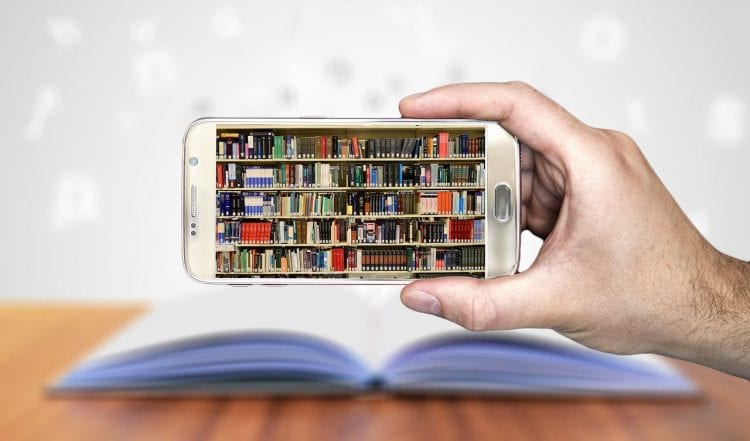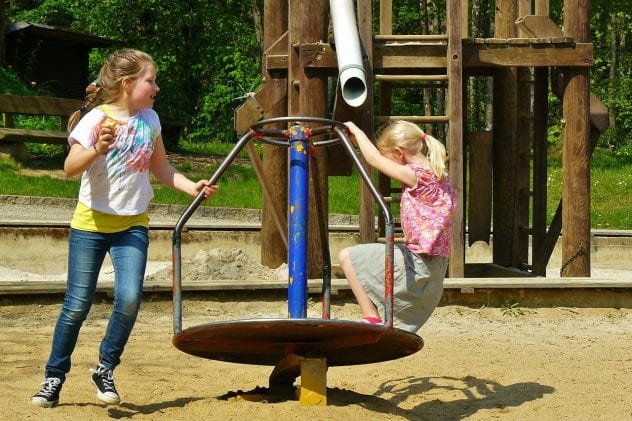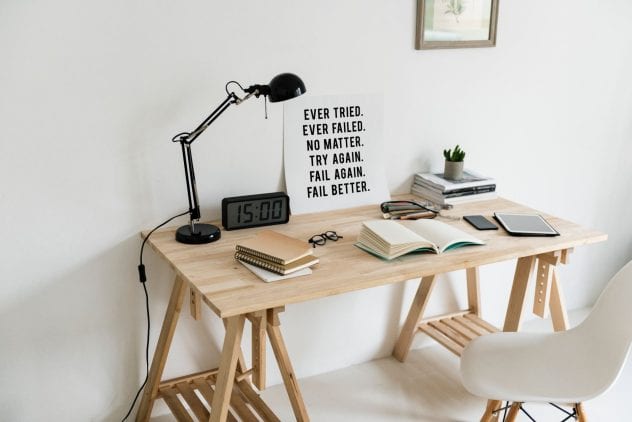By Michael Terborg (Teacher Librarian)
I’m a rather unique librarian for an elementary school. Before working in school libraries, I worked in three different federal research libraries, my education spans most every discipline, and I have a firm grasp of current and emerging technology. Yes, my skills may mean that I can provide my students access to certain things, however, I believe a good librarian really doesn’t need all of this. Yes, a librarian needs to know how to use the technology. Aside from that, a good librarian needs to be able to tell a good story, design experiences so the right questions may be asked, develop a collection that makes both scientific subjects and the humanities relatable to learners, and provide opportunities for students to create and tell their own stories. Why? Because stories teach. The story-form is one of the most powerful learning tools of all. (Read about the power of the story-form/narrative for all learning–how good teaching is story-telling–in this article by Gillian Judson.) I think creating a place for stories to teach and stories to be told requires us to re-imagine the school library.
Last year I started at a new school where I have just under 1,000 students. Previously, I worked with over 1,400 elementary students at two schools. My goal is to build on my early childhood program to develop a place that meets children where they are and provides them opportunities to grow and develop their interests along with encouraging them to discover new ones.
A (Technological) Playground
When I think of a playground, I think of freedom, of an unstructured time, and opportunities for students to be themselves. Students need the freedom to play, as play allows them to make sense of their learning and retain it. According to Dr. John Medina, a developmental molecular biologist and author of Brain Rules for Baby, the most neurologically active time for a child during the school day is when they’re at recess. To me, this is a problem.
If children’s brains aren’t engaged, we’re wasting their time as well as ours. Forget testing, grades, and behavior issues. If children aren’t engaged, it is possible to miss out on much of what life has to offer. One might as well put them back in the factories if all school is is a place to develop college and career readiness skills! School should not be a child’s job. There’s enough time for that later.
I am interested in promoting and provoking play–the feeling of a technological playground–in my school library. (Read more about the power and value of play in all education here).
What will my (library) playground look like? Aside from the books, that is?
No matter what the form, it will be a place for storytelling; a place to let students’ imaginations and creativity soar. I want to provide the tools that enable all students and teachers to dream and ponder; to ask themselves what they want to create, to make, to build, or design. While it could be a problem they want to solve, I’d rather they focus on something that inspires them, allows them to apply their learning, to figure out what their “Big Idea” is. In order to do this, children need access to a “technological” playground , a place where they can use tools, gather ideas, and create something. I want to transform my library into a learning playground. In essence, I want students to have the opportunity to master something and then be able to share it with their peers and their community. Here are the changes I plan to implement:
#1 I will increase the use of the technology we currently have.
I want learners and teachers to use the TV studio we have at our school throughout the day rather than just for morning announcements. I want all students to have access to the studio for presentations, for green screen work, and for whatever else they can come up with.
I want students to be able to use the computer lab more fully, effectively, and creatively. Not for playing educational games that may have limited value, but for coding, for prototyping, for communicating, and for collaborating with each other as well as working independently. I want them using technological tools that will allow them to learn the skills they’ll need in the future. I recognize that this is what schools may attempt to do today, yet most often it seems to be out of our concerns or frustration with the state of “education” in our country. In the 1950s and 60s we driven by the concern that we were falling behind the Soviet Union. In the 1980s, it was that we were falling behind the Japanese. Today it seems to be we’re falling behind India, China, Japan, and even North Korea seems to be catching us. Even if our fears are valid, we need to figure out a way to build our children’s capacity without holding them back because of our fear.
#2 I want students to incorporate current and new technologies into their storytelling.
Students need to be able to grab a robot, program it, and learn how to conduct a technological symphony.
I’ve read that thousands of years ago, the reason university professors originally read from the textbook was because they were the only ones who had access to the book (Freisen, N. A Brief History Of The Lecture: A Multi-Media Analysis, 2014). So, in order to convey the information to the students, they read it. Later, with the advent of the printing press and other technologies, the cost of the book fell rapidly. This enabled students to get their own copies of the text. This enabled students to have access to the expertise of highly educated professionals and others. Yet too often students simply read to be able to pass an examination. Textbooks and other written materials often have difficulty capturing the attention of the student–they fail to engage imagination. Many teachers integrate YouTube videos or other movies in an attempt to make learning activities a little more engaging. Yet I still wonder, how engaged are our students? Are they learning or are they bored? In the words of a former student, “All we do is watch videos. We’re sick of them.”
My student was right. Rapid technological development has now enabled us to integrate hands-on tools in ways we’ve never been able to before. We can have four and five year olds creating their own circuits out of Lego compatible building blocks or conductive play dough. Older students are using LEDs, soundboards, and other electronics to convey information. We are no longer limited to the written word, 2D images, or simple constructs. We are at the point where all of these tools need to be integrated into the learning process so that learners can simply use the tools they’re interested in using to deepen and express their learning. This is where the makerspace, the TV studio, the computer lab, robotics lab, and other facilities come into play.
#3 Children need to have access to loose parts.
What are loose parts? According to architect Simon Nicholson, it is the loose parts in our environment that empowers our creativity. In an elementary school, these are materials that can be moved, carried, combined redesigned, lined up, taken apart and put back together again in multiple ways.
Nicholson believes that all children are creative and if we enable children to create in ways that are not dominated by the cultural elite or by an inflexible school system, they will have greater ownership over their lives and more likely to construct their environment in a beneficial way.
Where do we go from here? We go back to the library.
References
Friesen, Norm. 2014. «A Brief History of the Lecture: A Multi-Media Analysis.» MedienPädagogik 24 (30.Sept.): 136–153. www.medienpaed.com/24/#friesen1409.
Nicholson, S. (nd). The Theory of Loose Parts An Important Principle for Design Methodology https://ojs.lboro.ac.uk/SDEC/



